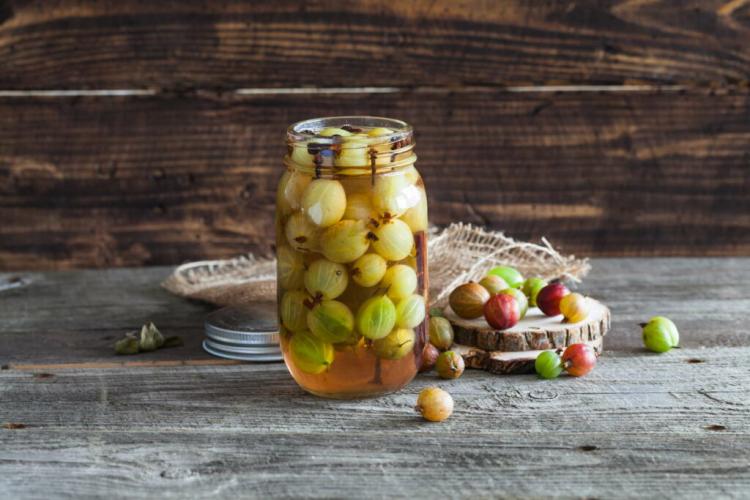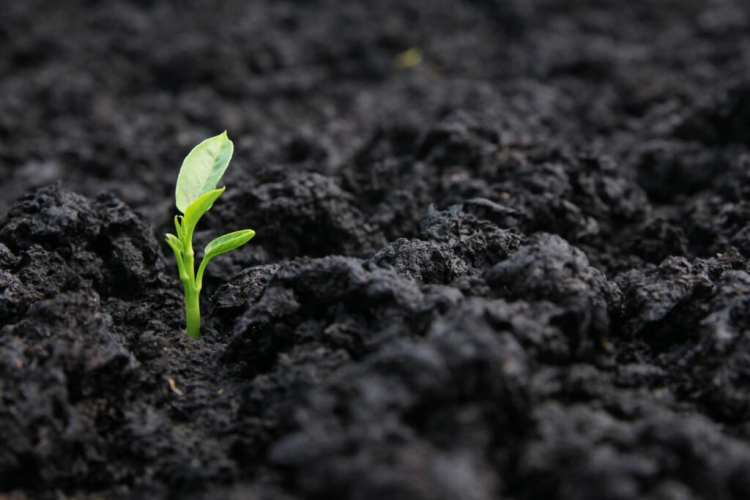Freezing And Boiling Gooseberries: Tips For Best Use
After a rich gooseberry harvest, the question arises of what happens to excess berries. You can find tips on freezing, boiling, etc. here.
Gooseberries ( Ribes uva-crispa ) are very healthy due to their high vitamin and mineral content and are best eaten fresh. Unfortunately, the berries can only be kept in the refrigerator for about ten days. If you want something from your harvest for longer, you should process or preserve the berries as soon as possible. In addition to being eaten fresh, the berries are perfect for cakes, compotes and other desserts, as well as for making jam and making juice. We have summarized the most important methods for preserving gooseberries for you.
Freeze gooseberries
Table of Contents
The procedure for freezing gooseberries is diverse. Whole or pureed, with or without sugar – the method depends primarily on the intended use. If you want to freeze whole fruits for a cake, there is a risk of them bursting due to the high water content. It is therefore advisable to harvest the berries shortly before they are ripe.
Freezing should then take place as soon as possible after the harvest. If this is not possible, the berries can easily be stored in the refrigerator for a few days, but they should still be firm for freezing. Green gooseberries are therefore better suited than red ones, because these do not lose their consistency as quickly.
First, wash the gooseberries and use scissors to remove the stems and remnants of flowers. Then they are briefly blanched in a saucepan with boiling water. If you want, you can now mix the berries with sugar in a ratio of 5: 1. Then fill the berries as close together as possible in freezer bags or suitable plastic containers. Do not forget to label the vessels and put a filling date on them. Because the frozen berries should be used up within a year.
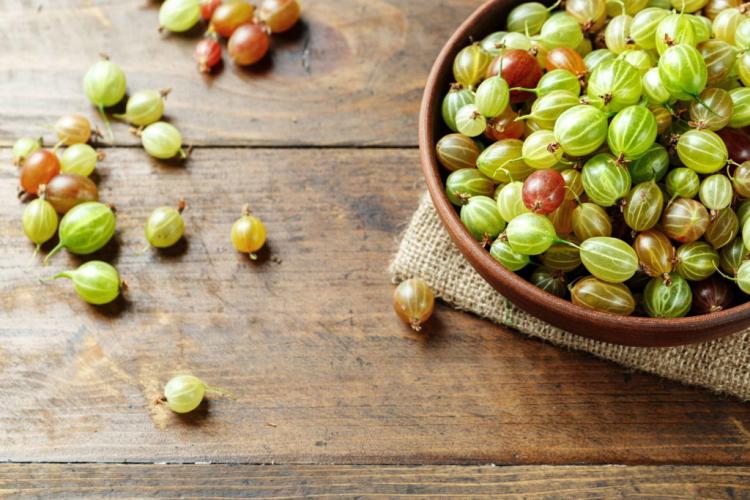
In order to be able to portion the gooseberries better later, it is also advisable to pre-freeze the berries. For this purpose, the gooseberries are spread out on a baking sheet and placed in the freezer for a few hours so that they do not stick together. In order to keep them as space-saving as possible, they should be transferred to freezer bags later.
Here’s how to go about freezing gooseberries:
1.) Wash and clean the gooseberries
2.) Blanch briefly in hot water
3.) Pre-freeze for a few hours on a tray
4.) Transfer to cans and freeze
Tip: If necessary, you can pierce the ripe fruits with a thin needle before freezing, as this reduces the risk of them bursting.
Reduce the gooseberries
For the production of jam or jelly, the fruits of varieties that are susceptible to space can be harvested in an immature state from the end of May to the beginning of June. To make jelly, the gooseberries are first washed and boiled in a little water until they burst. The fruit remains are then strained and the resulting juice is simmered for about 15 minutes.
You might so like: 9 Berries You’ve Probably Never Heard Of
Then add about 750 to 800 g of sugar per liter of juice. The jelly is cooked further until it has a firm consistency and is filled into clean glasses while still hot. These are then sealed airtight and placed upside down on the kitchen counter to cool down. Depending on the gooseberry variety, a green, yellow or red jelly is created. It goes wonderfully with meat dishes, but can also be used as a sweet spread.
You should definitely pay attention to the following when preserving:
- Do not use overripe fruits
- Skim while cooking
- Only fill clean glasses
- Preheat glasses so they don’t crack
- Fill in the jelly as hot as possible
- Fill glasses as full as possible
- Make sure that the lid closes well
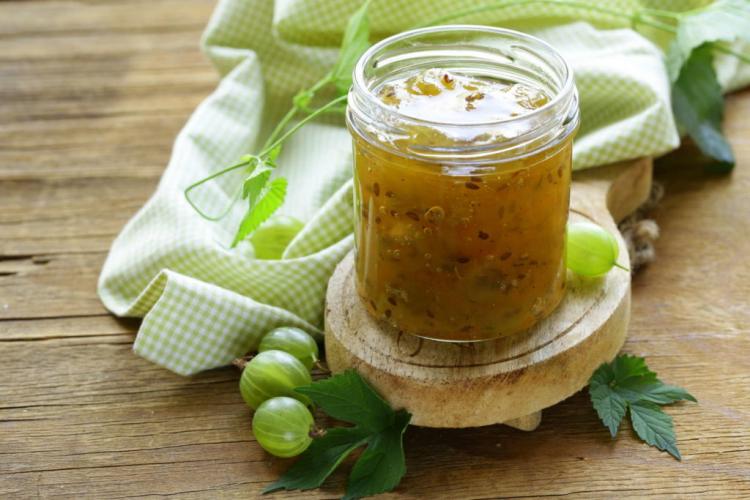
As gooseberries ripen, processing the fruit quickly after harvesting is recommended. Some varieties, such as ‘Green Hansa’, brown heavily during processing. Although this has no effect on the taste, the browning is not very appealing to the eye. Varieties like the ‘yellow triumphant berry’ or the ‘green ball’ are better suited for processing.
Preserve the gooseberries
You can use the whole fruit to make compote. To do this, the gooseberries are washed and the stem and flower base are removed. A sufficiently large glass is then filled to about three quarters full with the prepared gooseberries. Depending on the sweetness of the fruit, add a few tablespoons of sugar to the glass and fill it with water to just below the rim. Then screw the glass shut and put it in a pan of boiling water. The water should reach a few centimeters below the glass lid. For preservation, the pot is now covered and the glasses are boiled in this for 15 minutes. The finished gooseberry preserves should then be stored in a cool and dark place.
You might so like: Mini Kiwi: Origin And Special Features Of The Kiwi Berry
Juice the gooseberries
Gooseberry juice is easy to extract using a steam extractor. To make the juice durable, about 200 g of sugar are added per liter of juice and boiled. Then it is best to simmer for ten minutes, lift off the foam and stir in half a pack of hermit aids. Fill the juice into clean bottles while it is still hot and seal them airtight.
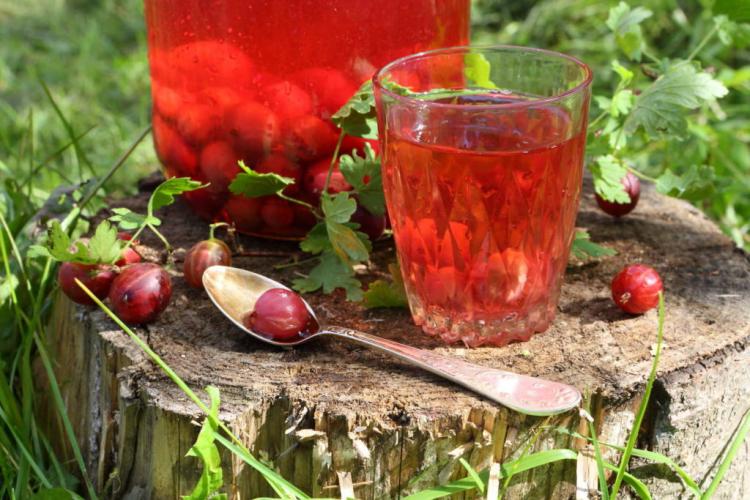
If you don’t have a juicer, you can also put the mashed gooseberries in a large saucepan and bring to the boil with water. Let the juice simmer again for about ten minutes, strain it through a juice cloth, and collect the resulting juice. Stir in the sugar again, boil the juice and add the hermit aid. Then fill the hot juice into boiled bottles and seal them airtight. The gooseberry juice should also be stored in a cool and dark place. Unopened, it can be kept for about a year.
Tip: Sprinkled with mineral water, gooseberry juice is a wonderful soft drink for hot summer days and you can also create fruity-sweet cocktails with it.
Dry gooseberries
Dried gooseberries can also be used as a raisin substitute for your muesli in winter. Due to the high water content, drying the berries is quite laborious and takes a long time. You can dry the gooseberries for several hours in the dehydrator or in a slightly open oven with circulating air (maximum 90 ° C). If possible, you should not wash the berries before drying, so as not to prolong the drying process unnecessarily. If there is still too much residual moisture, mold could develop during storage. Last but not least, it is best to fill the dried berries into dark glasses and seal them airtight.
You might so like: 10 Unusual And Exotic Fruit Varieties
Gooseberries are not only delicious, but also healthy because of their high vitamin C content. In this article we will introduce you to other types of fruit with a lot of vitamin C.
